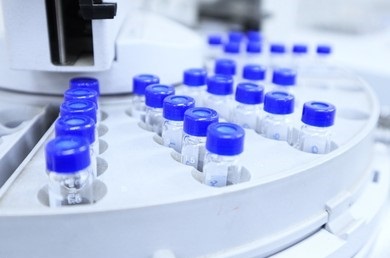Water pollution is one of the most important environmental pollution problems in the current society. Various inorganic pollutants produced in production and life enter the water environment, producing ecological effects, damaging the aquatic ecological environment, affecting the growth and development of plants and animals, and causing harm to aquatic organisms. Moreover, long-term consumption of water with too high a content of inorganic pollutants can lead to various discomfort symptoms in the human body. Water quality is directly related to human health and the survival of water organisms. Inorganic indexes in water are an important criterion to measure water quality, so detecting inorganic contaminants in the water is a matter of urgency.

Lifeasible's range of testing services has been expanding as we work in environmental protection and water quality testing, and our testing methods are constantly being updated and iterated. We have now introduced a variety of advanced, highly sensitive analytical instruments and methods for batch testing and analysis of a wide range of inorganic contaminants in drinking water, wastewater, reprocessed water, surface water, and groundwater.
| Elements | Methods | |
| Nitrite, Nitrate | The gas-phase molecular absorption spectroscopy (GPMAS) method has the advantages of fast determination, wide concentration range, and high accuracy of results compared with the traditional spectrophotometric method. Lifeasible can determine a variety of inorganic pollutants in various water samples using the GPMAS method. The determination process is simple and fast, a routine interference separation, and does not require consideration of sample color and turbidity interference. This feature enhances the range of samples we can detect. | |
| Bromate | ||
| Ammonia nitrogen, total nitrogen, Kjeldahl nitrogen | ||
| Halide | ||
| Sulfide | ||
| Chloride | ||
| Permanganate index | ||
| Inorganic hydrargyrum (Hg) | Lifeasible uses atomic fluorescence spectrometry (AFS) to determine inorganic mercury in the aqueous environment, which is characterized by high sensitivity and stable results and is suitable for measuring trace amounts of mercury from 10−9 to 10−12 g/g in environmental waters. | |
| Inorganic arsenic (As) | The main detectable forms include As(V), As(III), and As. Lifeasible using hydride generation (HG) technology, graphite furnace atomic absorption spectroscopy (GFAAS) technology, inductively coupled plasma (ICP) technology, ICP-AFS technique, inductively coupled plasma-mass spectrometry (ICP-MS) technique, high-performance liquid chromatography (HPLC)-ICP-MS combination, neutron activation analysis (NAA), polarimetric analysis, and dissolution voltammetry, etc., to provide accurate, reproducible and rapid inorganic arsenic detection and analysis services. | |
| Inorganic anionic pollutant | F− SO42− |
Lifeasible's double inhibition ion chromatography method provides rapid, accurate, and highly practical analytical detection of F− and SO42− in water. |
| ClO3− ClO2− |
Lifeasible has established an ion chromatographic method for the simultaneous determination of ClO3− and ClO2−, which significantly reduces matrix interference and improves the signal-to-noise ratio and sensitivity of the analytical method. | |
Lifeasible has established a mature detection system for detecting and analyzing inorganic contaminants in water, with the advantage of low detection limits and high sensitivity. In addition, we can separate and enrich target substances quickly, efficiently, and accurately, which allows us to perform simultaneous analysis and testing of large numbers of samples to meet our customers' testing needs. Please get in touch with our staff for any analytical needs.
Lifeasible has established a one-stop service platform for plants. In addition to obtaining customized solutions for plant genetic engineering, customers can also conduct follow-up analysis and research on plants through our analysis platform. The analytical services we provide include but are not limited to the following:
Get Latest Lifeasible News and Updates Directly to Your Inbox
Mechanisms Regulating Plant Chloroplast Biogenesis
April 15, 2025